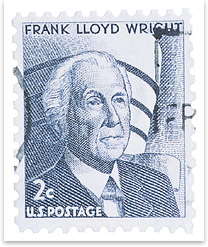
Best Practices by Jim Atkins, FAIA, and Grant A. Simpson, FAIA A billion here, a billion there, and pretty soon you're talking real money. Summary: Almost everyone wants to build projects at the lowest cost, while maintaining relative quality. Owners generally want the most building for their money, either to buy more scope or to sell the project at a higher margin. The period between the time the cost is fixed, either through an accepted bid or an established guaranteed maximum cost, and the time all of the labor and materials for construction of the building are purchased, is called project buyout. During this time the contractor can generally increase their profits if they can find a better deal on the specified products and get the architect and owner to accept them. Better yet, if there is a shared savings with the owner on reduced project costs, both the owner and contractor stand to gain.
This article is about project buyout and the risks involved, including the value analysis/substitution process (or value engineering, if you prefer) and its effect on the owner, architect, and contractor. Because substituting elements of the architect’s design involves product evaluation, coordination with related or affected elements, and possible manipulation of the overall building configuration, some posit that owner or contractor selected substitutions constitutes “design,” and possibly the practice of architecture. We will provide our observations on this position along with a review of tactics used to get substitutions accepted, and we will offer some suggestions for improving your chances for surviving the substitution assault on your project. Prices slashed, today only The project cost is established by the contractor through the solicitation of quotations from multiple subcontractors. Many contactors and their subs often have longstanding relationships that span many years. These relationships allow the sub to submit a price to their “favorite” contractor that is lower than the competition because there are fewer unknowns that can equate to risks.
On guaranteed maximum cost (GMC) priced projects, contractors work the numbers in various ways. In addition to basic sub competition, contractors sometimes require subs to absorb project costs in their bids that would ordinarily be in the contractor’s general conditions. Such costs can include things like project cleanup, sharing the cost of vertical transportation, or sub-provided bonding in lieu of a contractor-provided bond. Contractors often hold the sub prices open well into the construction phase, hoping to find a better price before signing the subcontract. This can be perilous, especially if the contractor has gone “hard” on the number in a contract with the owner. Recently, when gasoline prices sharply escalated, some contractors were caught when they had guaranteed the price to the owner, but they had not secured contracts with their subs. When gasoline prices suddenly rose, the subs, fearful that increased operating costs would erode their profit, immediately withdrew their bid numbers leaving the contractors with a contracted GMC and no subcontractor pricing to back it up. When the subs re-priced their work, it was substantially greater than their original bid. Some of the contractors, caught with a GMC shortfall, immediately imposed a vigorous value analysis/substitution effort to get the project costs within the contracted GMC. In spite of such calamities, contractors continue to roll the dice and hold the prices while shopping for lower numbers, attempting to find a better deal before the work must be put in place.
In typical project buyout when a better price is found than the one in the bid or guaranteed maximum cost, the contractor often absorbs the difference into their profit without passing it on to the owner. This can be so lucrative that the practice of “bid shopping” has been known to occur in some markets. This is done by revealing the low-bid subcontractor’s number to other subs with an offer to give them the job if they submit a lower bid. This practice is unfair and it is counter to the premise of competitive bidding where a bidder submits a price in good faith with the rightful expectation that the lowest qualified bid will be accepted. Shopping, as we use the term, also involves looking at alternative materials and systems. In today’s design and construction environment, most building systems and many materials have become highly proprietary and comparable systems are rarely a true equal. We addressed this in our August 2005 AIArchitect article, “Drawing the Line,” where we explored the concept of “conceptually equal, but nominally different”). Thus, when changes in materials and systems are made, though conceptually equal, they may be physically different enough to require document and even system changes. Buyout substitutions For most of the last century, the architect alone determined what products would be included in a project. The architect researched, evaluated, and specified, and that’s the way it was. Infrequently, a product would be difficult to obtain in a particular geographic area, and a more available substitution with reasonable equivalency would be selected. More infrequently, a product would no longer be manufactured, and an available similar product was used in its place. Today, the flattening of the earth has greatly reduced these problems.
Although commonly used throughout the industry, the use of the term “value engineering” in proposing cost reductions during the construction phase is misleading, and it is a disservice to the well established Value Engineering process that has proven itself over the years and is used throughout U.S. government agencies. In this article we will refer to the value engineering process used during construction by what it actually is; buyout substitutions. Substitutions are typically proposed after the contact is executed, although some owners require that the bid documents solicit proposed substitutions with the bid. MasterSpec® sets a time limit on when substitutions will be considered. However, since substitutions are often driven by project buyout, and most owners just can’t resist “a better deal” when it is offered, many agree to consider them throughout the construction phase until buyout is completed.
The impact of substitution review time on the construction schedule can be used as a strategy by the contractor to force acceptance of a particular product or system. This tactic is addressed in detail in the chapter “Maintaining Design Quality,” originally published in The Architect’s Handbook of Professional Practice Update 2004 and included in the upcoming 14th edition of the handbook, due out in early 2008. To pull it off, the contractor must avoid submitting a submittal schedule indicating anticipated fabrication and shipping time. Unless the architect enforces the submittal schedule requirement, many contractors never “get around” to providing it. The contractor then waits until the last minute to submit the shop drawing and demands a quick approval. When the architect objects that the product does not equal that which was specified, the contractor asserts that preparing a submittal for the product that the architect specified, submitting it for review, and waiting for a space in the fabrication line will delay the project. Owner objections are usually quelled by either the threat of delay or perhaps an offer of compensation for the compromised product; with an assessed value that is often pennies on the dollar. Owners, lured by the monetary incentive and fearful of a project delay, often agree to the compromised and cheaper product. What the AIA Documents say Substitutions became so commonplace in the 1990s that they were addressed by the AIA documents in the 1997 document revisions. AIA Document A201, General Conditions of the Contract for Construction, states in Section 3.4.2 that substitutions will be added to the work by change order. However, adding the substitution to the work scope does not necessarily require the architect to change the drawings. There is a great difference in risk to the designer of record if the drawings are changed. If the construction documents are revised to include the substituted product or system, the architect will probably be viewed as the primary endorser of the substitution and be found to be responsible as if it had been a part of the original drawings. For this reason, you may elect not to change your construction documents. You have the choice to require the contractor to provide sufficient information for constructing the changed portion of the project using shop drawings, specifications, and/or clarification sketches. Potential problems: some examples
Later, when a very strong tropical storm hit Houston, ballasted single-ply roofs on high-rise buildings downtown began to “gallop” due to the extreme negative pressures at the parapets. The result was displacement of the roof ballast resulting in extensive broken glass in adjacent building curtain walls. When claims from the damages were resolved, architects were found to be responsible because they had revised their drawings and certified substantial completion of the single-ply roofs. Substitutions during project buyout can be beneficial and they often serve well in bringing projects into budget. Where the architect must be careful is in accepting and incorporating into the documents substitutions that may not perform as expected or may have a greater chance of failure. Should the substitution fail to perform, the architect is almost always blamed or in some way brought into the dispute. In another example, on a small office building in a northern state during a value engineering/substitution exercise, the contractor proposed to substitute a window system without insulated units or a thermal break for a savings of $7,500 over the originally specified system requiring those characteristics. The owner, who had a very limited budget, accepted the proposal. The architect was asked to change the drawings to reflect the change. The architect revised the drawings and provided an appropriate specification, he issued a change order revising the window system, and the project was built. Within two years, fuel prices radically increased, and the cost for heating the building in winter was far beyond the expectations of the tenants, so they threatened to move out of the building. They knew business associates in more efficient buildings who were paying much less rent. The owner, upset over the circumstances, sent a demand letter to the architect alleging faulty design and threatened suit. The architects, who felt they had only followed directions, stood their ground and hired a lawyer. The suit was settled in mediation by the architect agreeing to pay $200,000. The architect’s professional liability insurance policy had a deductible of $50,000, which was paid directly by the architect. The architect’s culpability arose from the fact that the architect changed their drawings and issued a specification. This was determined to be the same as if the compromised system had been designed and specified by the architect originally. Although the architect proposed an acceptable system, their failure to reject the less efficient VE change, or at least voice clear objections while attempting to explain the adverse consequences of the change, obviously created the illusion that the architect was endorsing the change. Of course, a settlement is not a true measure of how a jury may have decided the cause … the outcome of the dispute could have been better, or much worse.
The architect can also ask for a hold-harmless agreement to protect themselves in the event the owner is not happy with the final outcome of the change. Some members of the AIA Large Firm Roundtable (a group of larger architecture firms) incorporate such a hold-harmless clause into their contracts. The substituted system can also be noted on payment certifications and the certificate of substantial completion as owner-accepted nonconforming work. Although these actions may seem extreme, they are a viable response to protect the architect’s interests when the owner and the contractor wish to play the part of the architect and change the design in a manner the architect believes is unwise. Additional efforts that can be made to dissuade the owner in accepting the change include a frank discussion, with a consultant present when necessary, to review the impact of the compromised system. The objective is owner enlightenment, and it can be a very effective risk management technique. Example: A successful substitution
Although the architect elected to change their drawings and issue a specification, the system was noted as a substitution throughout the documents. The owner–contractor agreement had a clause that required the contractor to replace substituted products or systems that fail during the first year after substantial completion. Substitution notations were added to future payment certifications as well as the certificate of substantial completion. Within the first year after project completion, leaks were encountered in the exterior wall, but the subcontractor and supplier corrected the failed conditions without incident. End of story. Everyone was happy. Unfortunately, messy disputes arise when contractors and subcontractors refuse to stand behind their work as this subcontractor did. Conclusion Architects will likely always be challenged by project buyout, even if integrated project delivery brings enhanced team interaction and cooperation as many speculate. The primary risk lies in the widely accepted viewpoint that only one person or company is legally responsible for the selection of the products and systems that go into projects. An architect’s reputation and financial survival often rests upon their ability to select appropriate products and administer their incorporation into the building effectively. Owners and contractors are not concerned and do not worry about the architect’s license or the responsibilities that go with it. It therefore becomes incumbent upon the architect to provide protection from detrimental compromises in building designs and systems by issuing warnings of the consequences of value engineering, asking for releases of liability, rejecting and refusing to detail the substitutions that are demanded, and noting substitutions as owner-accepted nonconforming work.
The informed architect could set up an internal process for administering VE/substitution proposals that can be explained to the owner and contractor before the project begins. Some firms have a VE/substitution spokesperson or committee that reviews and clears all substitution proposals. The decision to change or not change the drawings must be made with care, and the architect benefits from being prepared to help the owner and contractor understand why such actions are being taken. Follow-through is important in qualifying change orders, payment certifications, and certificates of substantial completion to adequately document a contested substitution. This buyout substitution process, cleverly and erroneously disguised as value engineering, has become very popular over the past few decades, and it will likely not go away. Some architects may continue to accept substitution compromises in their designs in good faith and willingly administer them to their detriment. Effective management of substitution compromises requires actions that are not always easily accepted or understood by the owner or contractor. So, as you review with your fellow architects what your recourse will be when the next unacceptable proposed buyout substitution comes around—such as eliminating the waterproofing from the basement wall—think about what you can do to protect yourself better with documentation, think about how you can help the owner and contractor better understand your view of reasonable objectives … oh, and of course, don’t forget to be careful out there. |
||
Copyright 2007 The American Institute of Architects. All rights reserved. Home Page |
||
A printer-friendly version of this article is available.
Download the PDF file.
James B. Atkins, FAIA, is a principal with HKS Architects. He serves on the AIA Risk Management Committee and is chairman of the Architect's Handbook of Professional Practice, 14th edition Revision Task Group.
Grant A. Simpson, FAIA, is a nationally recognized project delivery leader. He is a past chair of the AIA Practice Management Advisory Group.
The statements expressed in this article reflect the authors’ own views and do not necessarily reflect the views or positions of the American Institute of Architects. Publication of this article should not be deemed or construed to constitute AIA approval, sponsorship, or endorsement of any method, product, service, enterprise, or organization.
This article is intended for general information purposes only and does not constitute legal advice. The reader should consult with legal counsel to determine how laws, suggestions, and illustrations apply to specific situations.
The Real Value Engineering
Value engineering, originally called “value analysis,” was developed at the General Electric Corp. during World War II, and was defined as "an analysis of the functions of a program, project, system, product, item of equipment, building, facility, service, or supply of an executive agency, performed by qualified agency or contractor personnel, directed at improving performance, reliability, quality, safety, and life cycle costs."
In the 1980s, the U.S. Office of Management and Budget, the president’s budget supervisors, began issuing circulars requiring federal departments and agencies to use value engineering (VE) as a management tool, where appropriate, to reduce program and acquisition costs. Organizations such as SAVE International, which calls itself “the premier international society devoted to the advancement and promotion of the value methodology,” supports and provides certification credentials in the value engineering process.

 A popular vehicle for achieving these gains is the substitution process, which is often imposed within a very short time frame, late in the game when time is critical, often causing the architect to render product evaluations without extended research. We touched on substitutions in our May 2006
A popular vehicle for achieving these gains is the substitution process, which is often imposed within a very short time frame, late in the game when time is critical, often causing the architect to render product evaluations without extended research. We touched on substitutions in our May 2006  On competitively bid projects, contractors depend on competition among the subs to obtain the lowest price. Many subs, fearful that their competition will find out their number, wait until the final seconds before submitting their final bid. It is common to see “bid runners” standing around with multiple cell phones waiting for that last phone call before bids are submitted. The bid runners give their bid to the contractor who writes in the sub’s number and totals the bid just in time to submit it by the deadline.
On competitively bid projects, contractors depend on competition among the subs to obtain the lowest price. Many subs, fearful that their competition will find out their number, wait until the final seconds before submitting their final bid. It is common to see “bid runners” standing around with multiple cell phones waiting for that last phone call before bids are submitted. The bid runners give their bid to the contractor who writes in the sub’s number and totals the bid just in time to submit it by the deadline. Shop till you drop
Shop till you drop Thirty-odd years ago, in the quest for cost reduction, contractors began to propose substitutions for the products specified after the construction contract was executed. They offered many reasons for the proposals, but the underlying basis was the reduction of cost. The commonly used slang for these proposals was
Thirty-odd years ago, in the quest for cost reduction, contractors began to propose substitutions for the products specified after the construction contract was executed. They offered many reasons for the proposals, but the underlying basis was the reduction of cost. The commonly used slang for these proposals was  Time is money
Time is money
 What can you do?
What can you do? A meeting was held with the owner, contractor, subcontractors, and EIFS supplier to review the specified system. A specification was issued that required a pre-installation conference/mock-up review. The mock-up was necessary to show all design conditions of the EIFS system and encourage the trades to coordinate their work with each other. The EIFS supplier was required to visit the site during installation and certify the finished system. The applicator was required to be certified by the manufacturer.
A meeting was held with the owner, contractor, subcontractors, and EIFS supplier to review the specified system. A specification was issued that required a pre-installation conference/mock-up review. The mock-up was necessary to show all design conditions of the EIFS system and encourage the trades to coordinate their work with each other. The EIFS supplier was required to visit the site during installation and certify the finished system. The applicator was required to be certified by the manufacturer. These actions and discussions are not always well accepted by owners and contractors because they appear to be detrimental to the cost reduction process and the architect is not viewed as a team player. The architect can benefit by taking the initiative and informing and educating the contractor and the owner regarding the risks involved, whether they listen or not.
These actions and discussions are not always well accepted by owners and contractors because they appear to be detrimental to the cost reduction process and the architect is not viewed as a team player. The architect can benefit by taking the initiative and informing and educating the contractor and the owner regarding the risks involved, whether they listen or not.